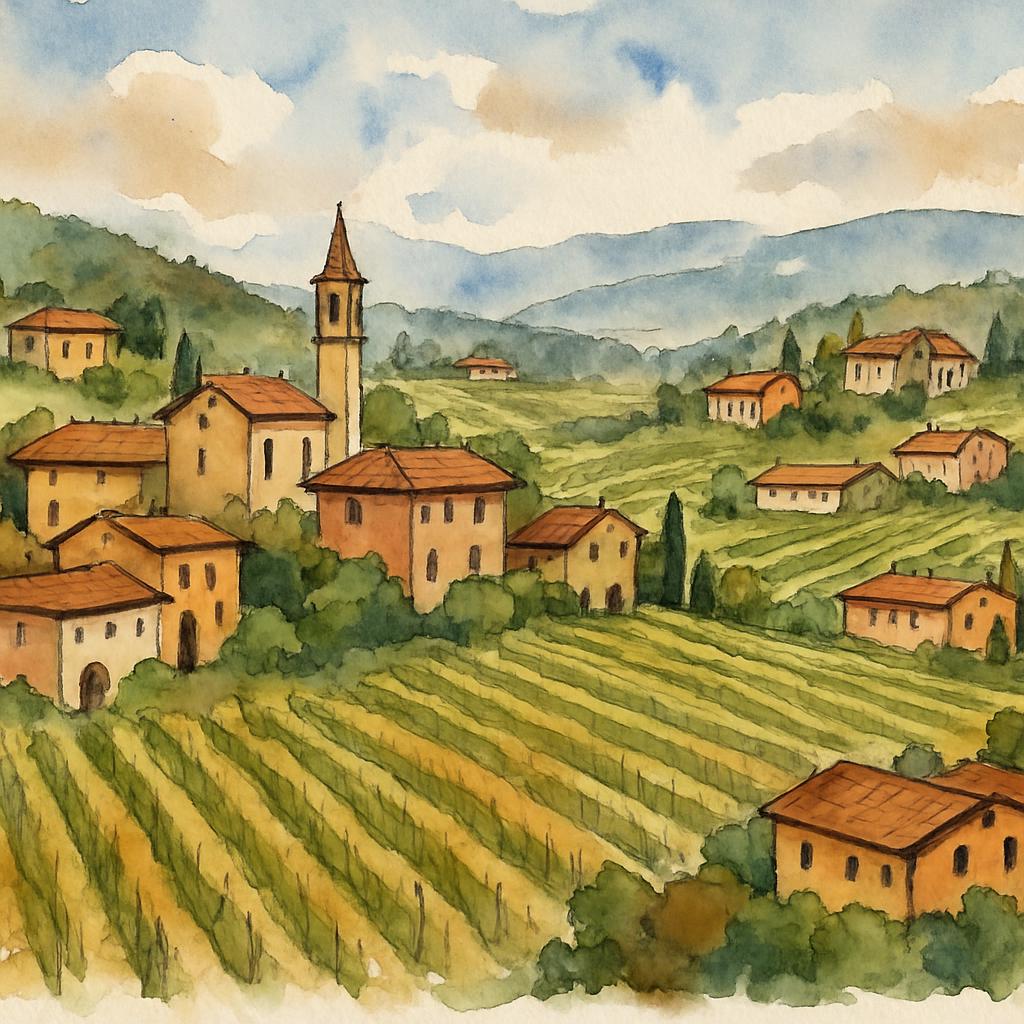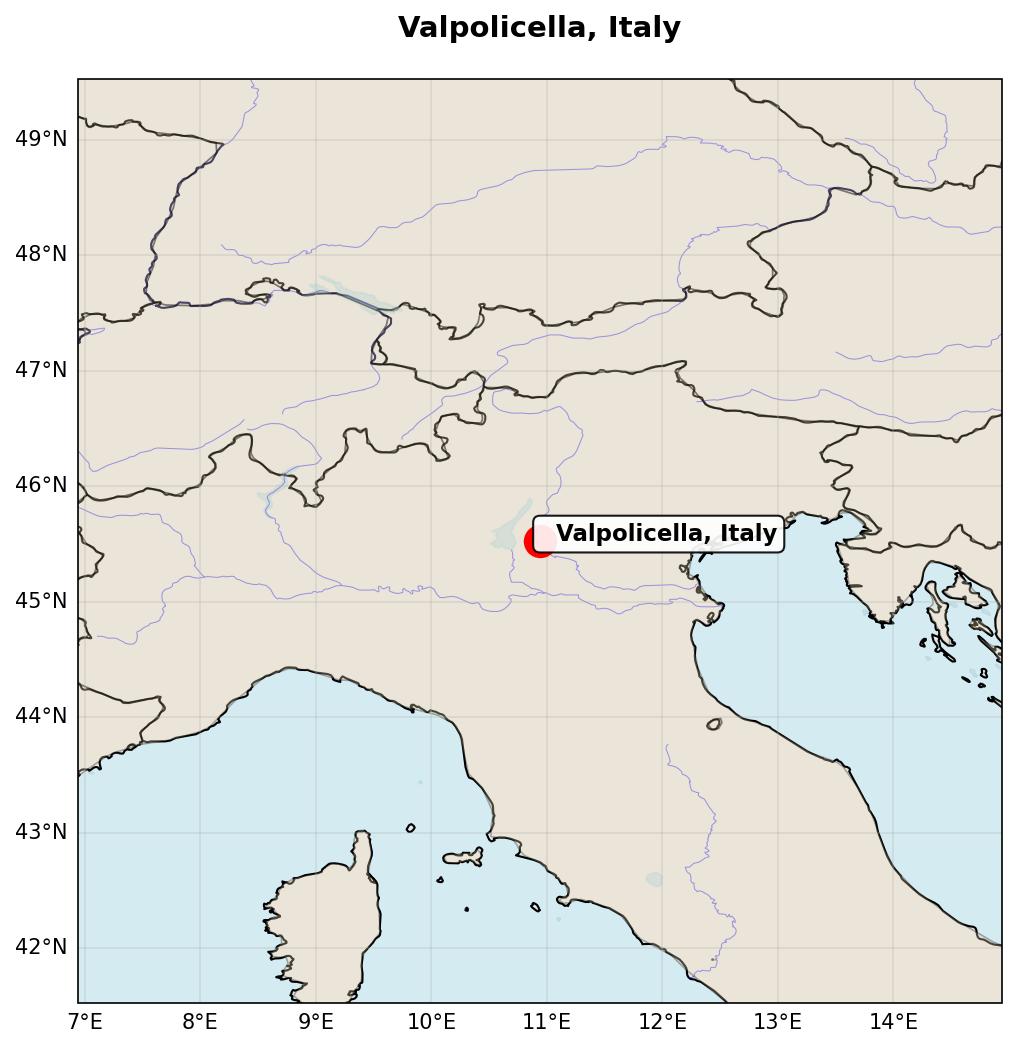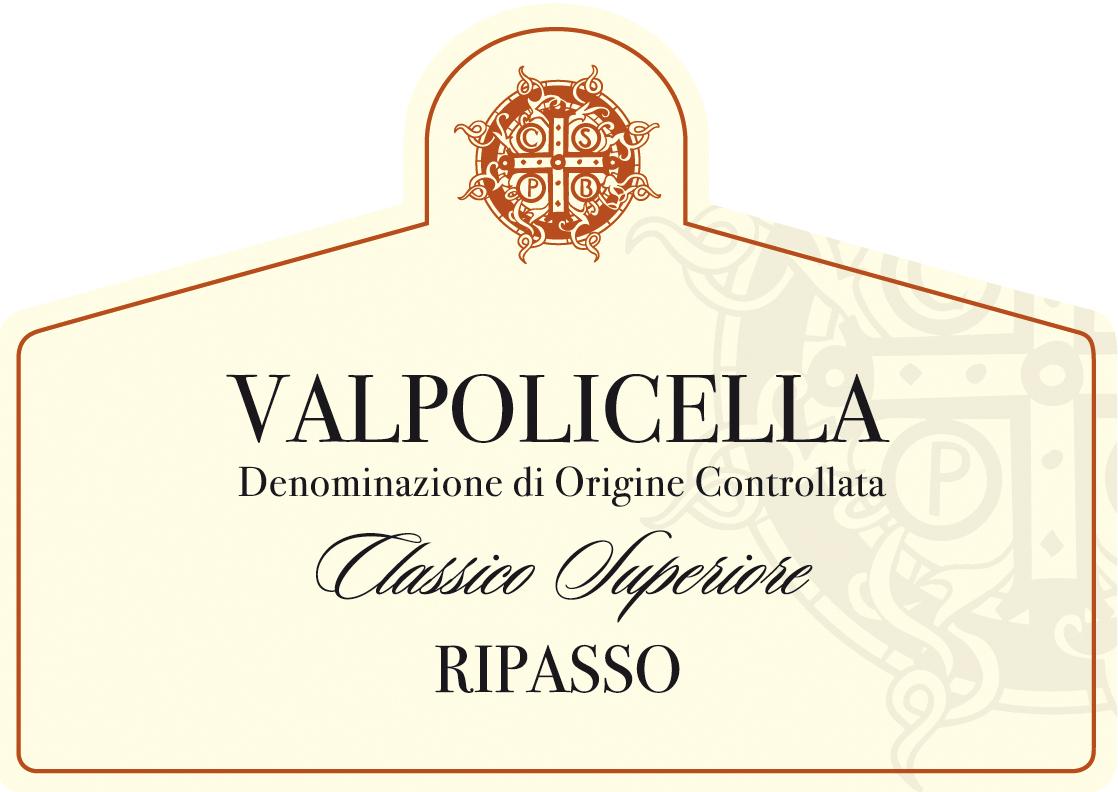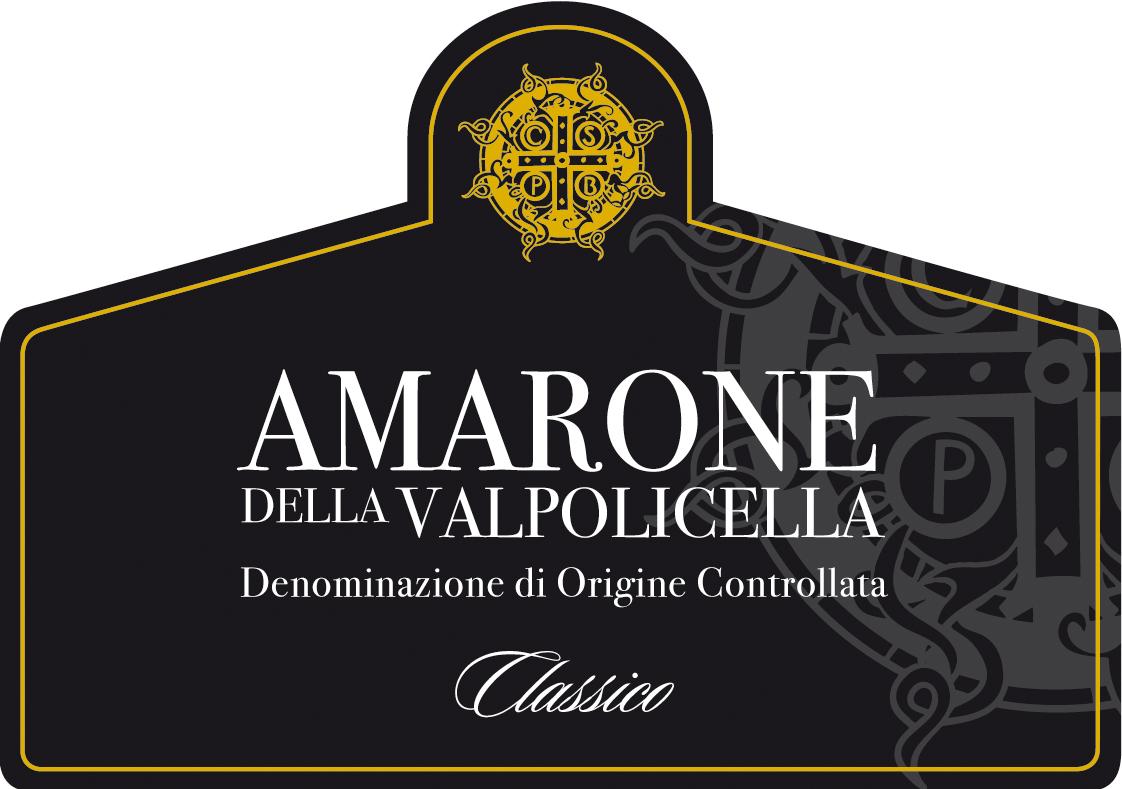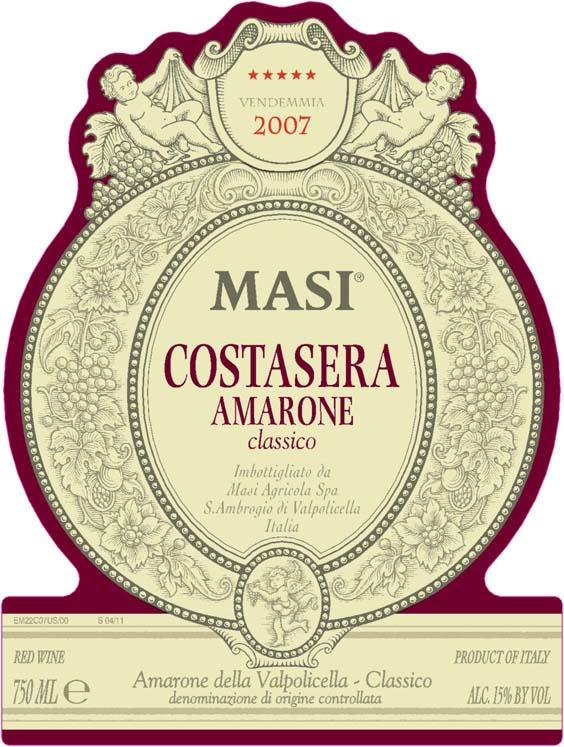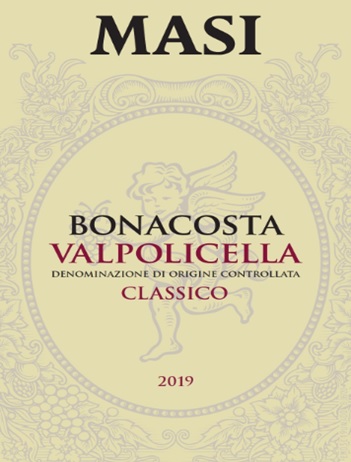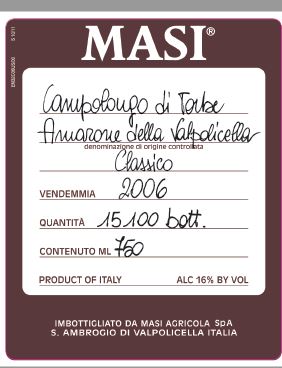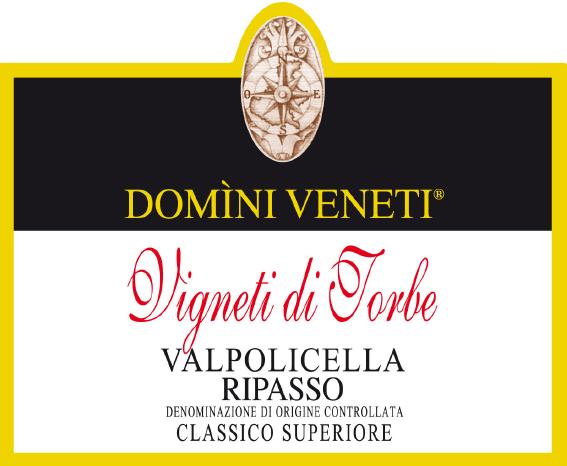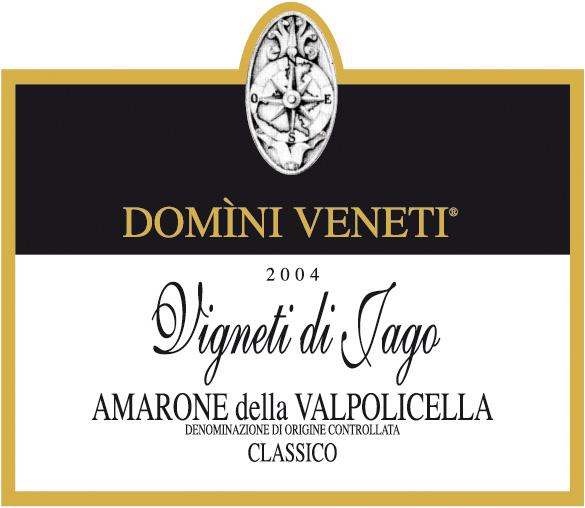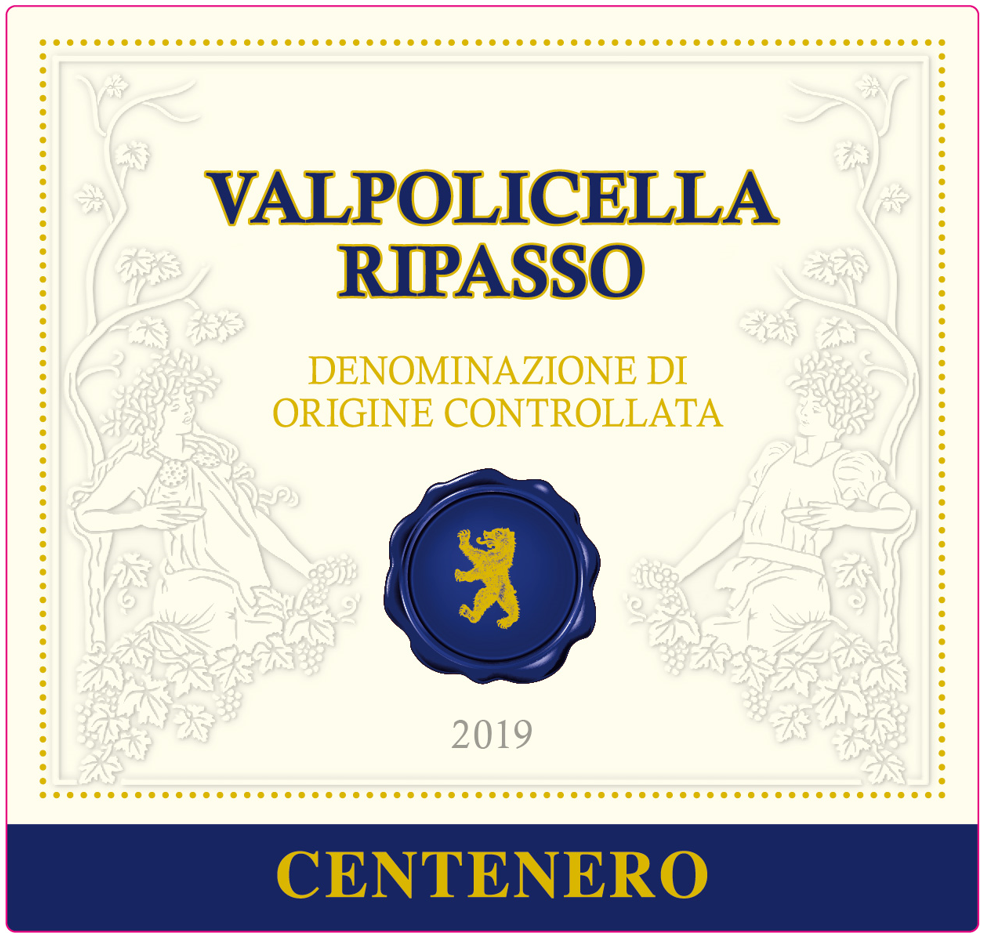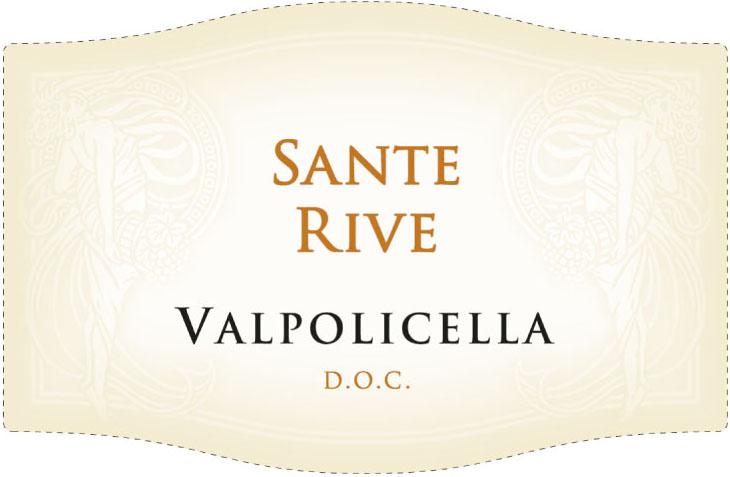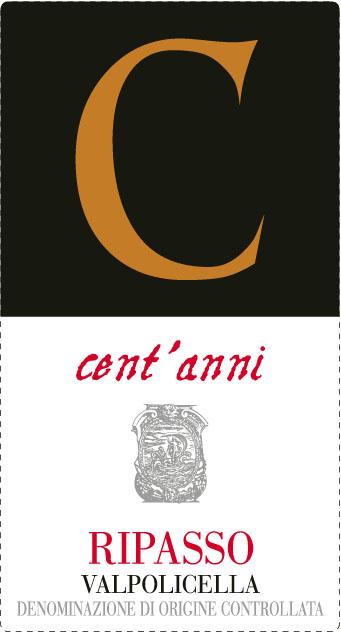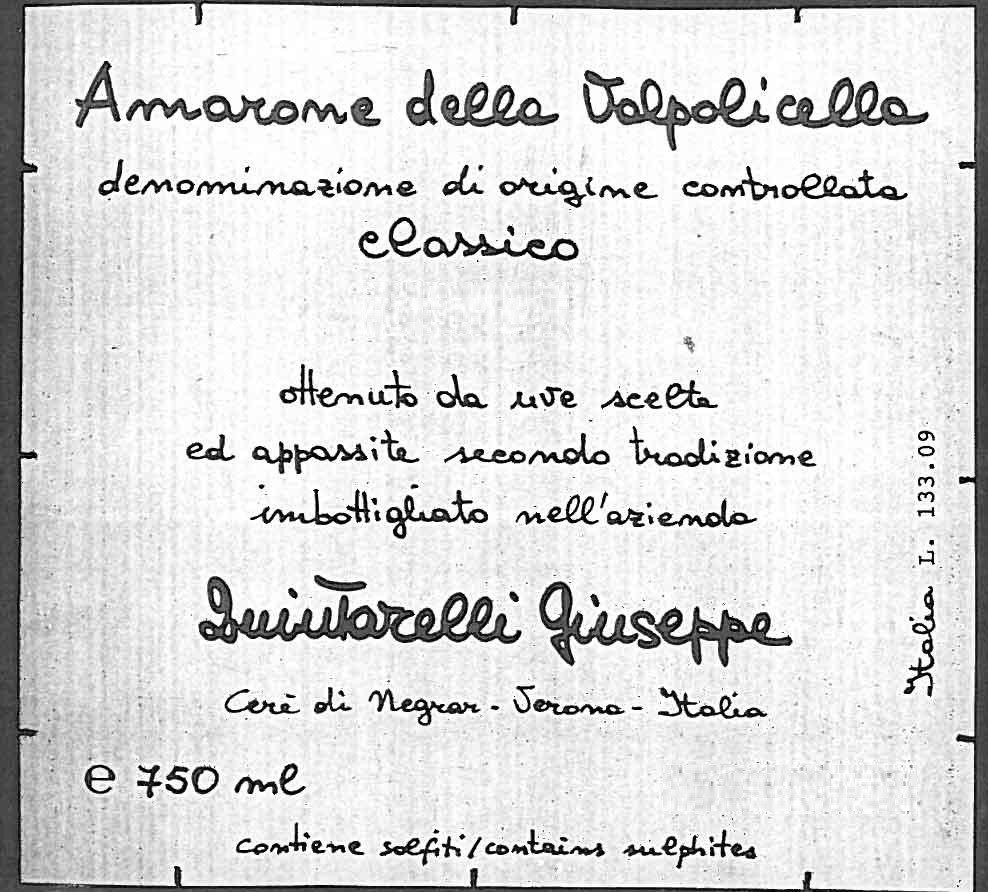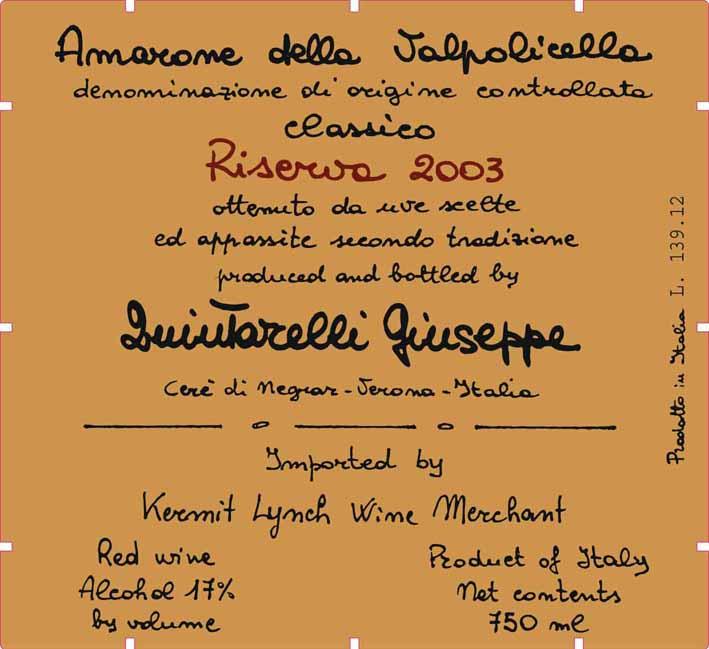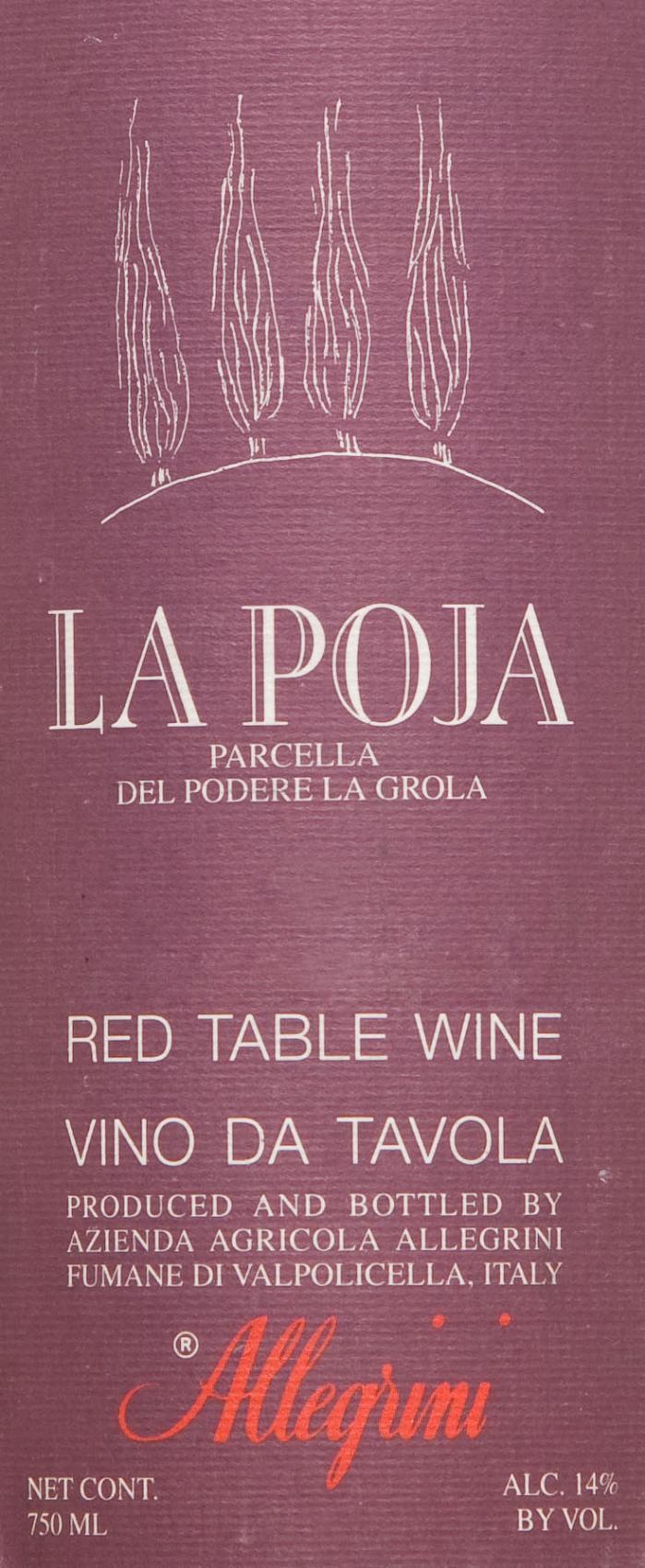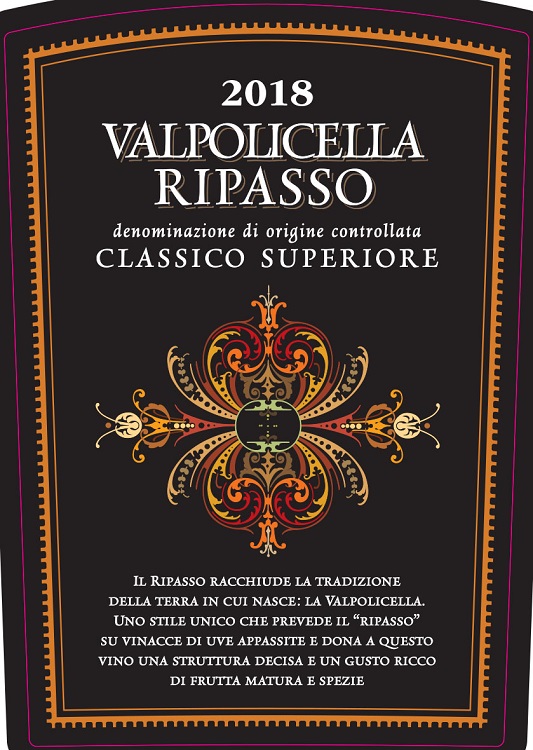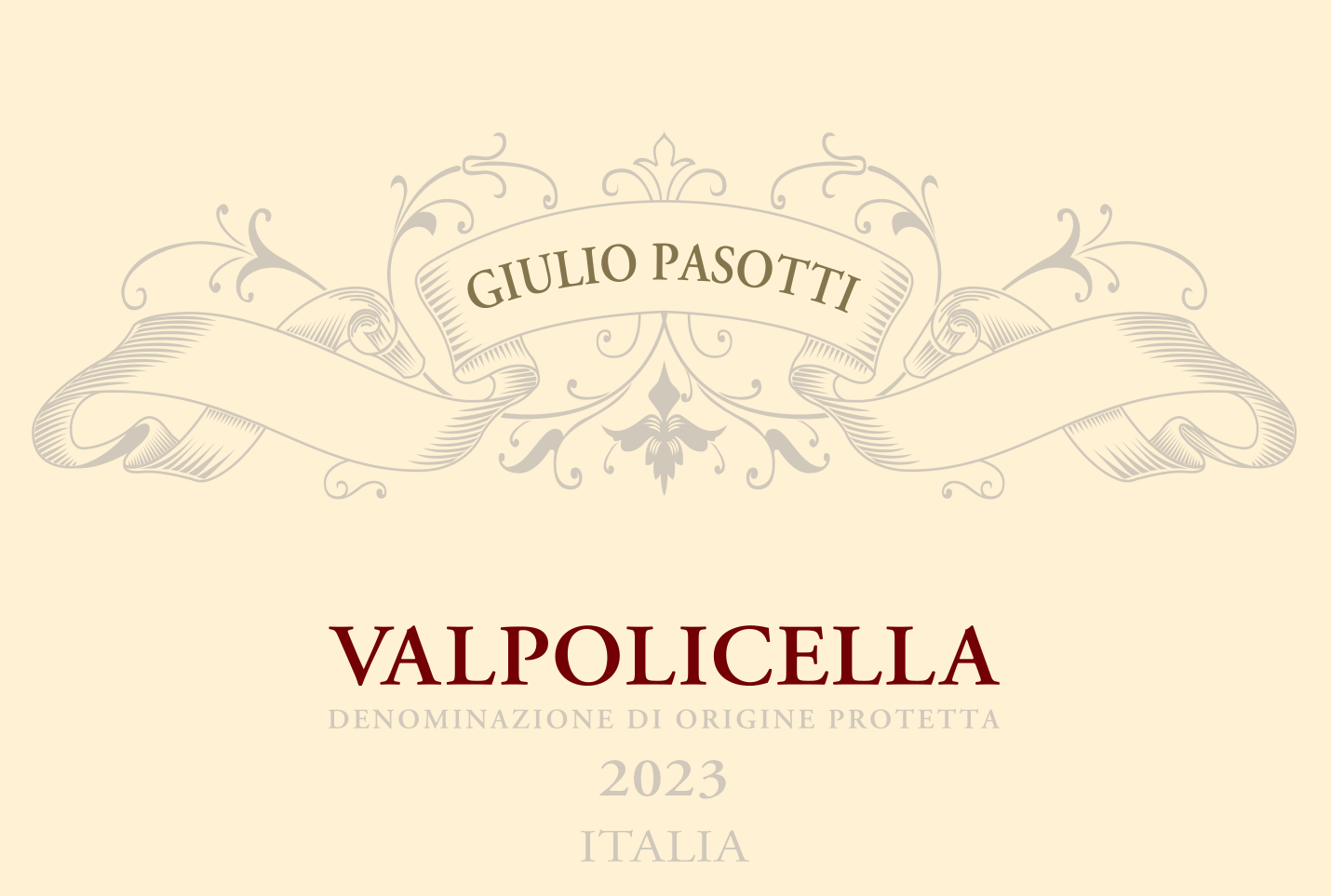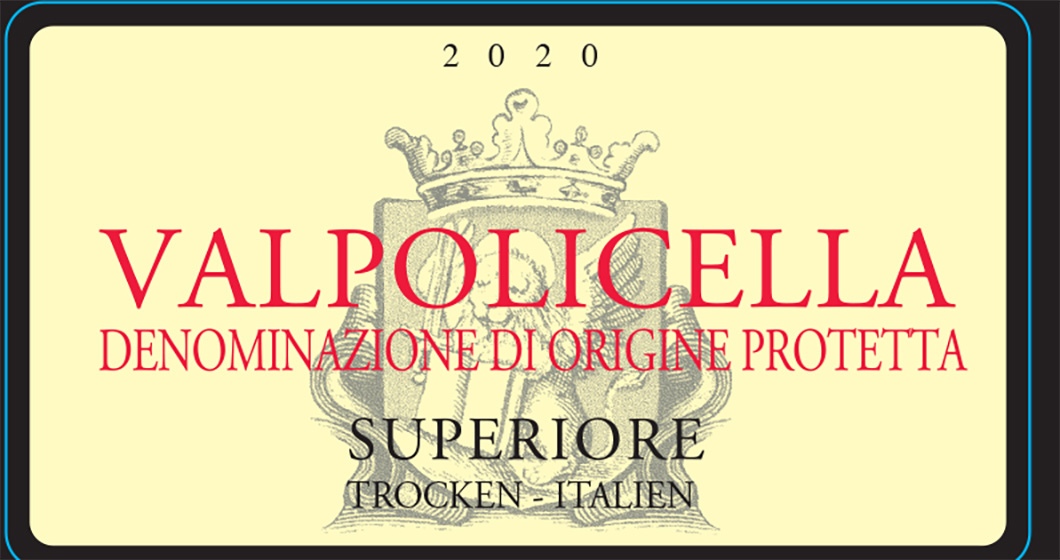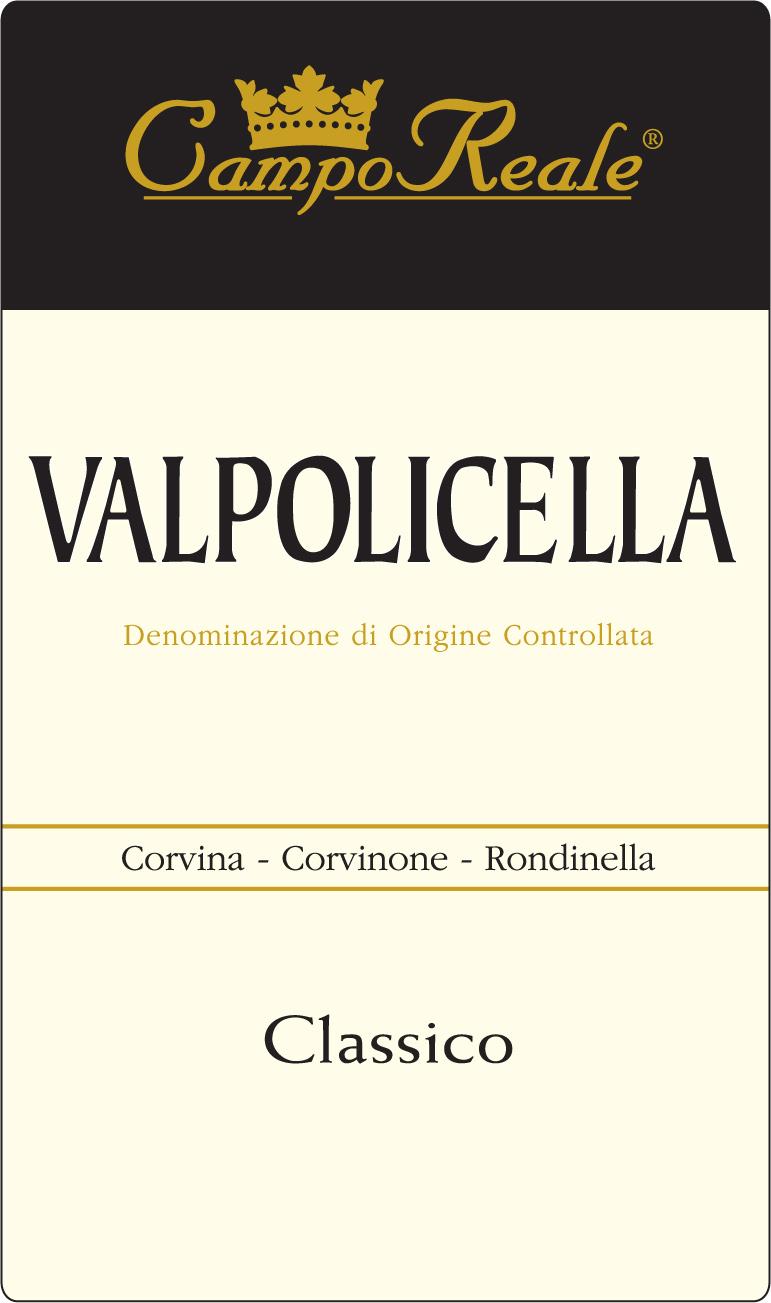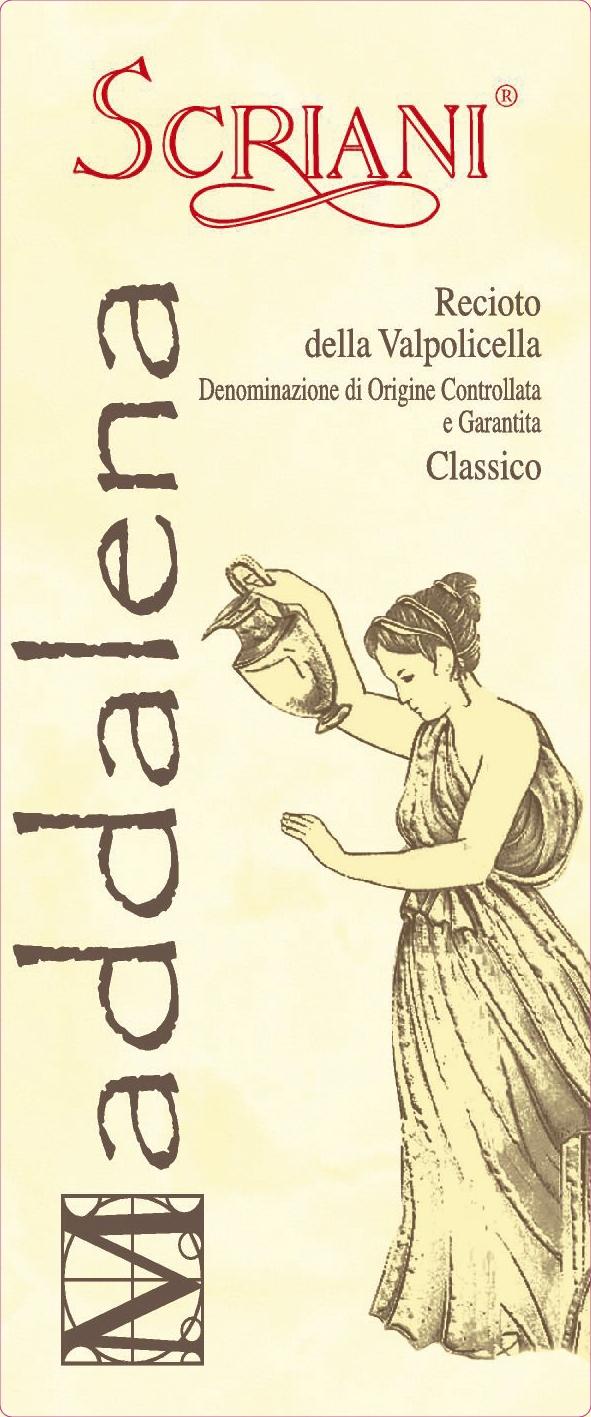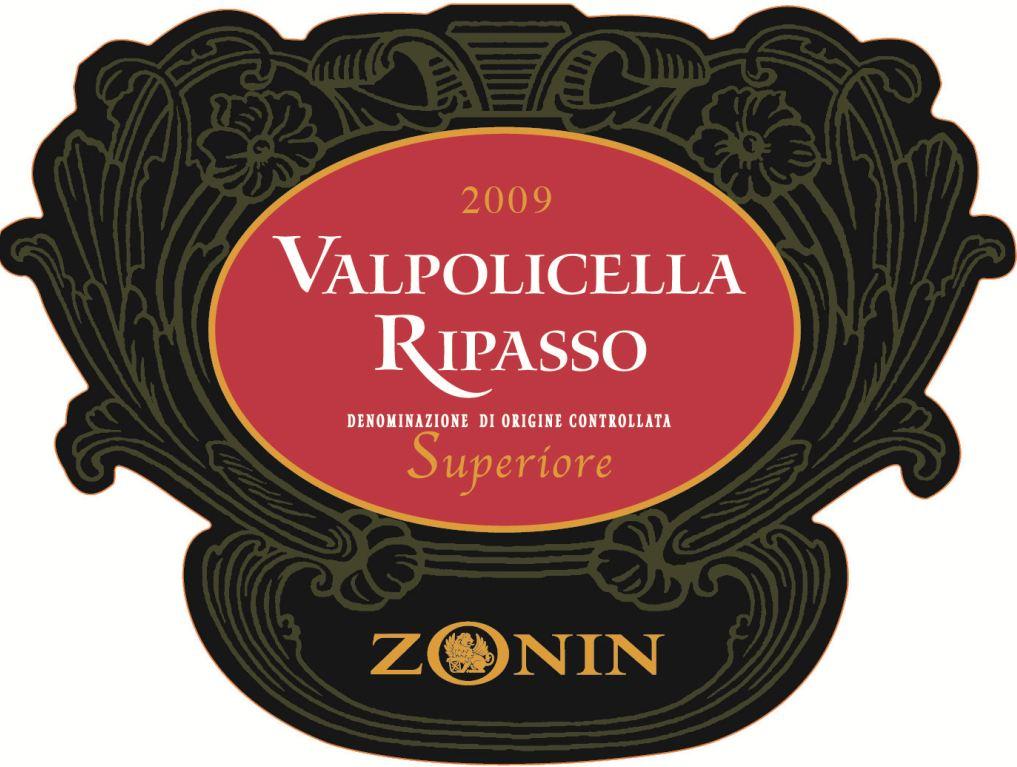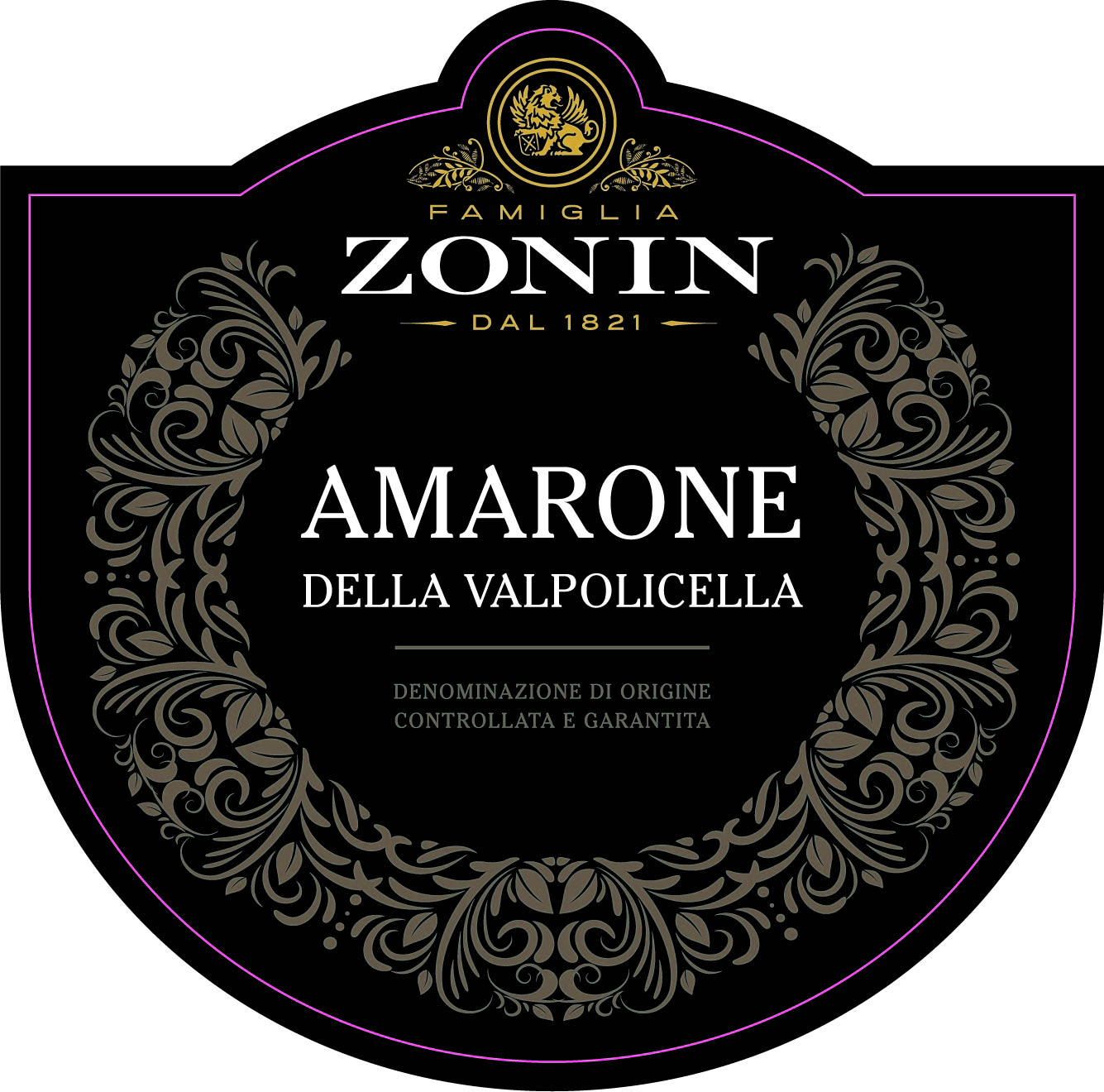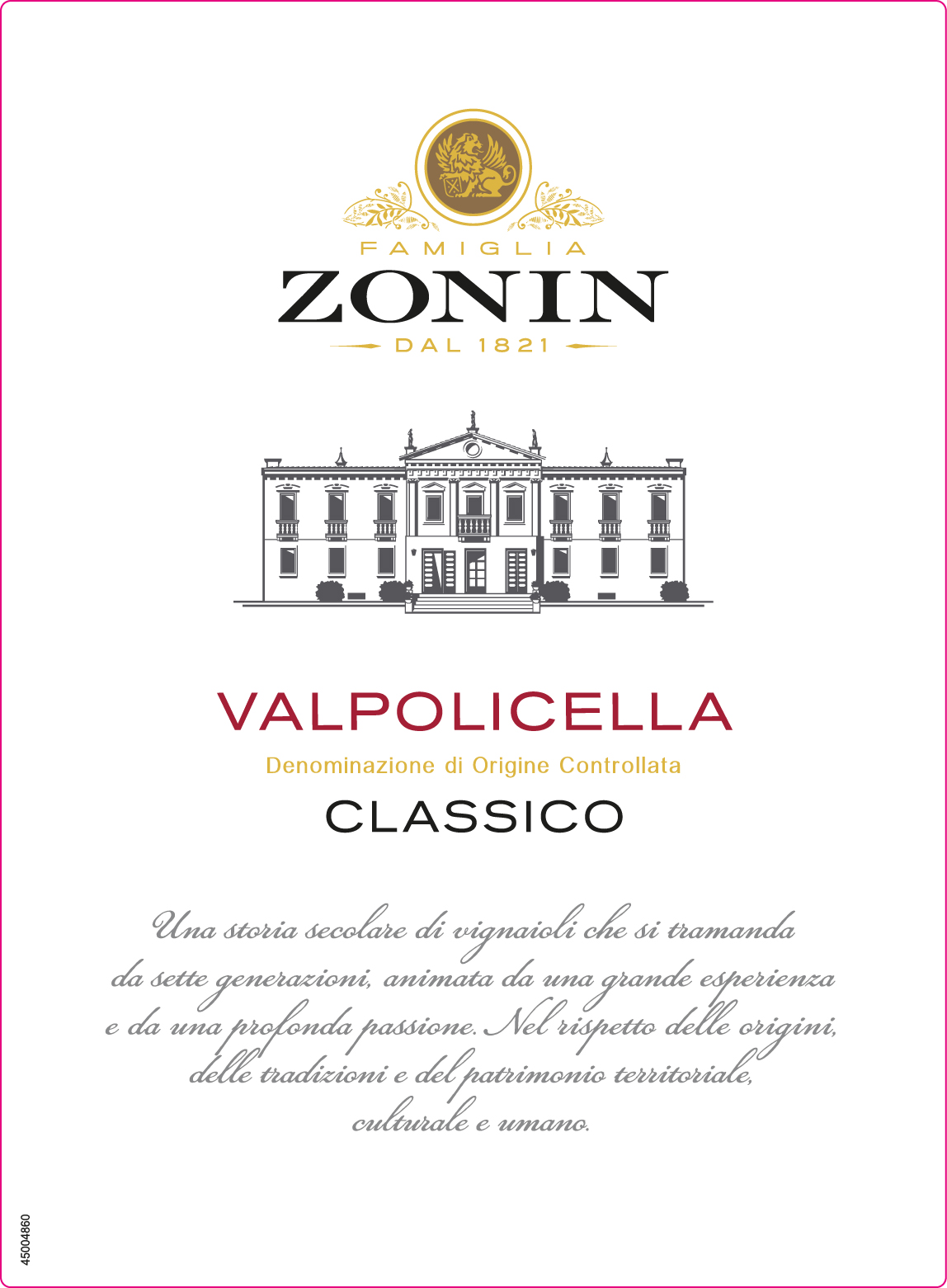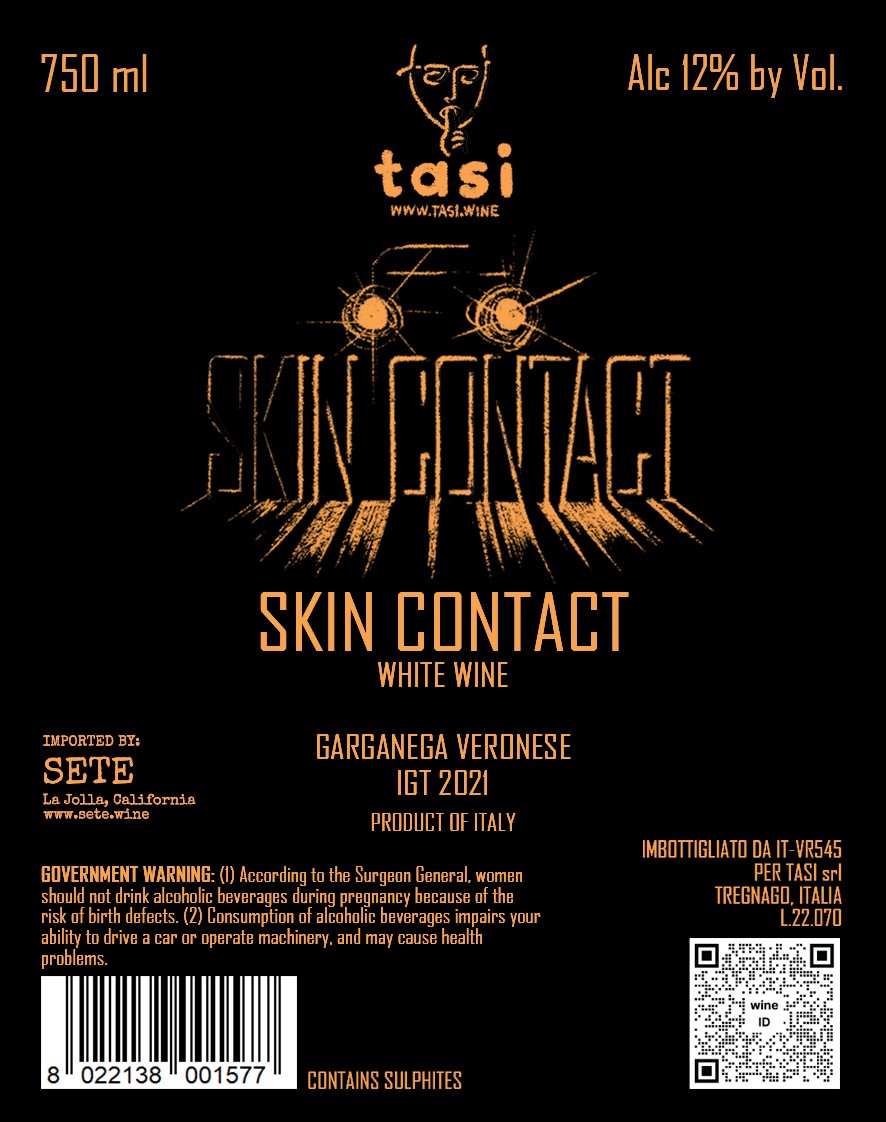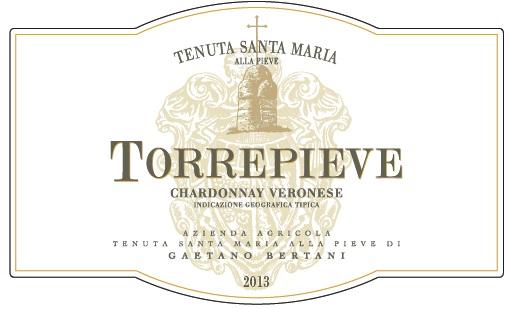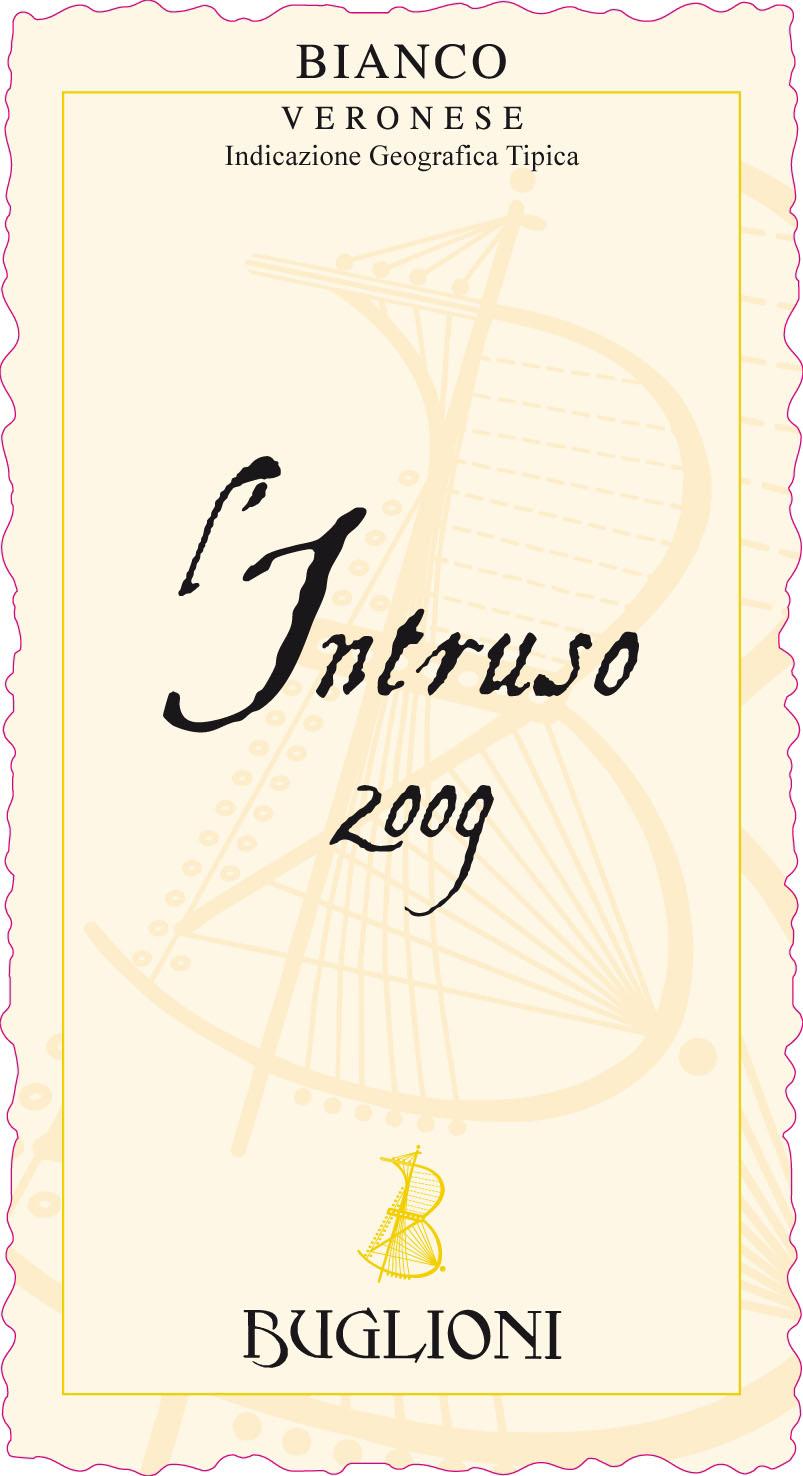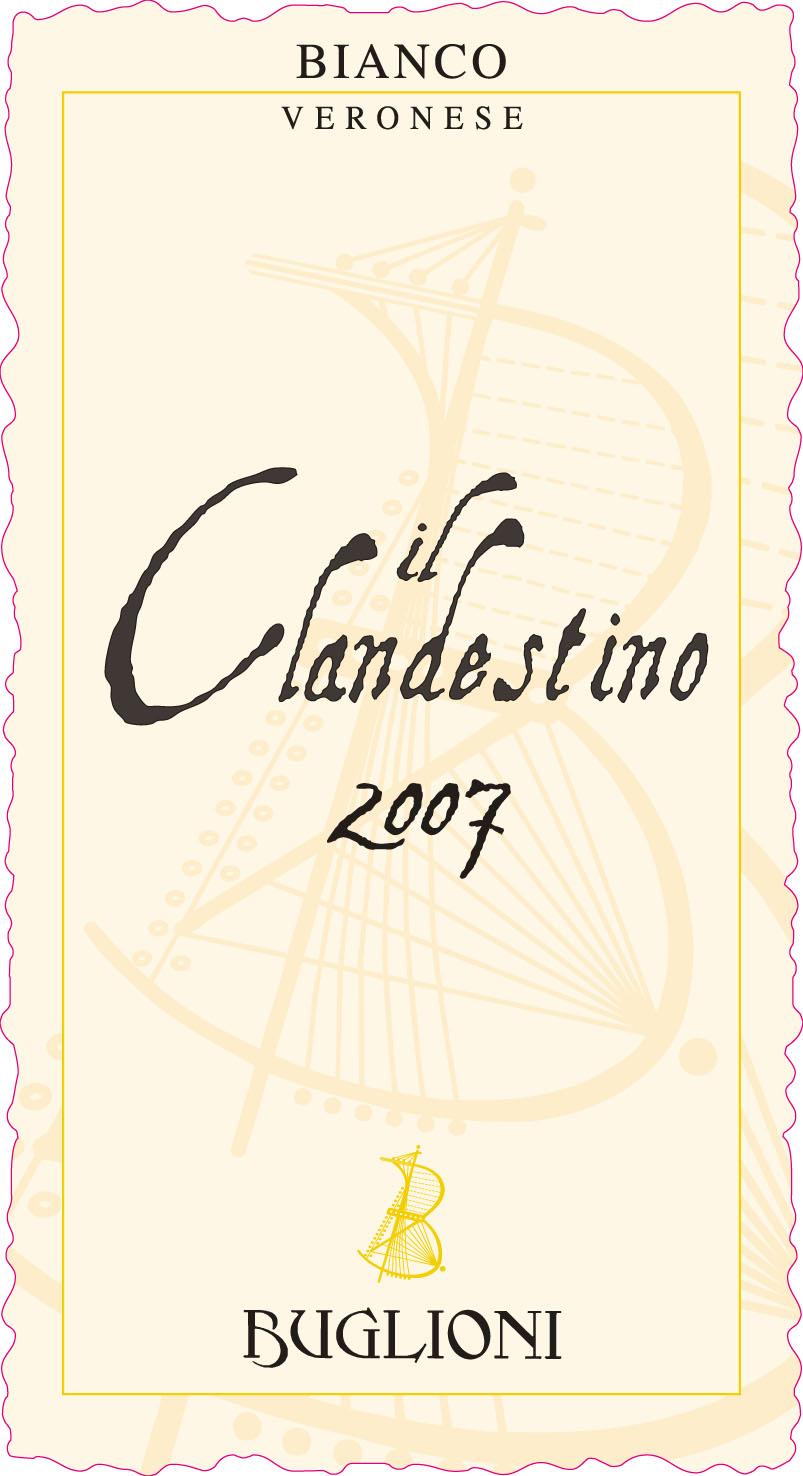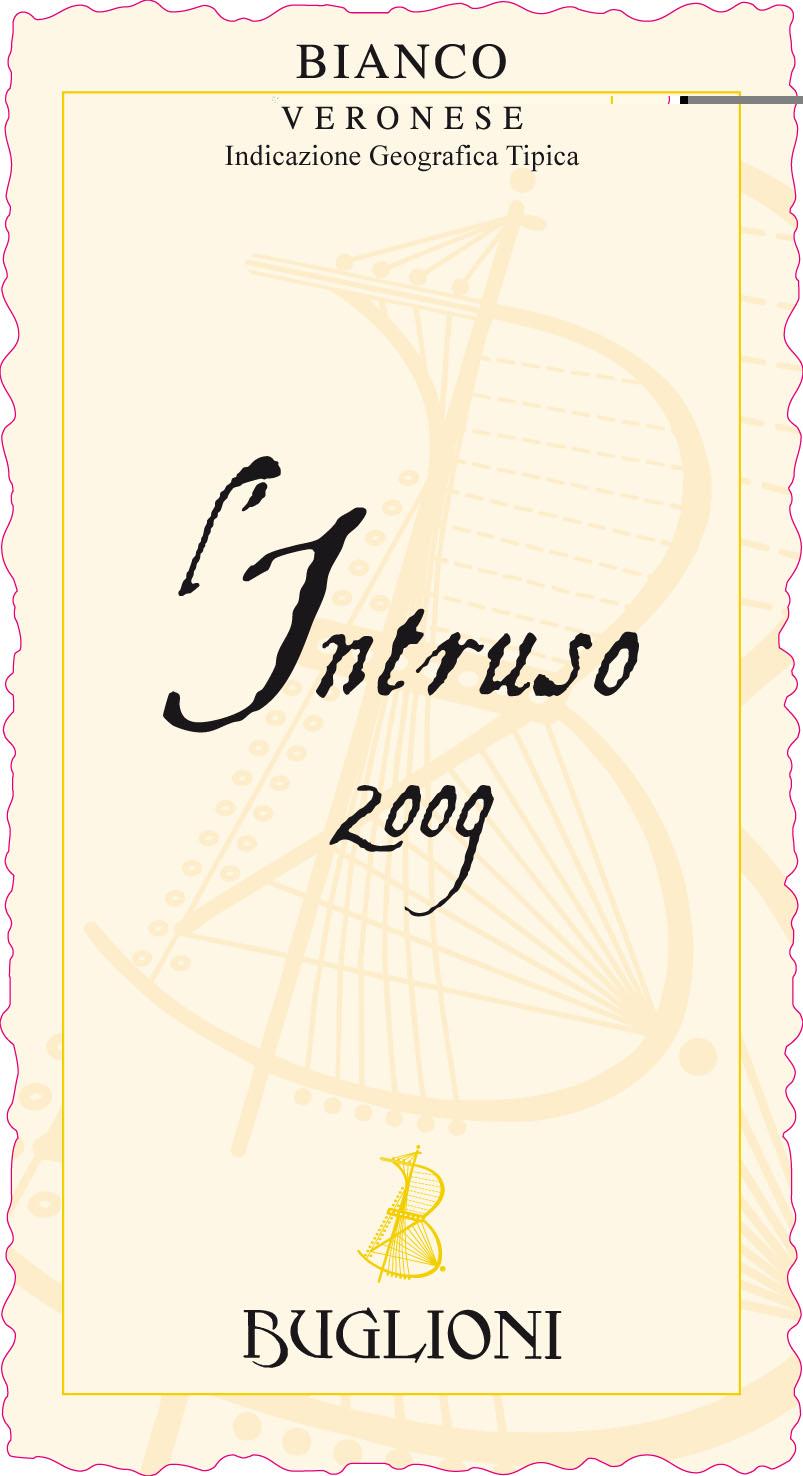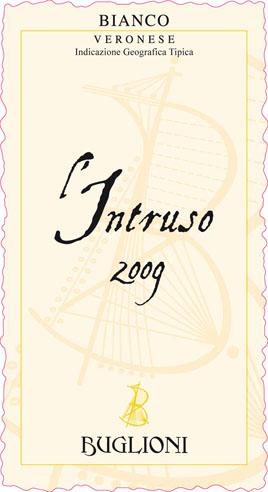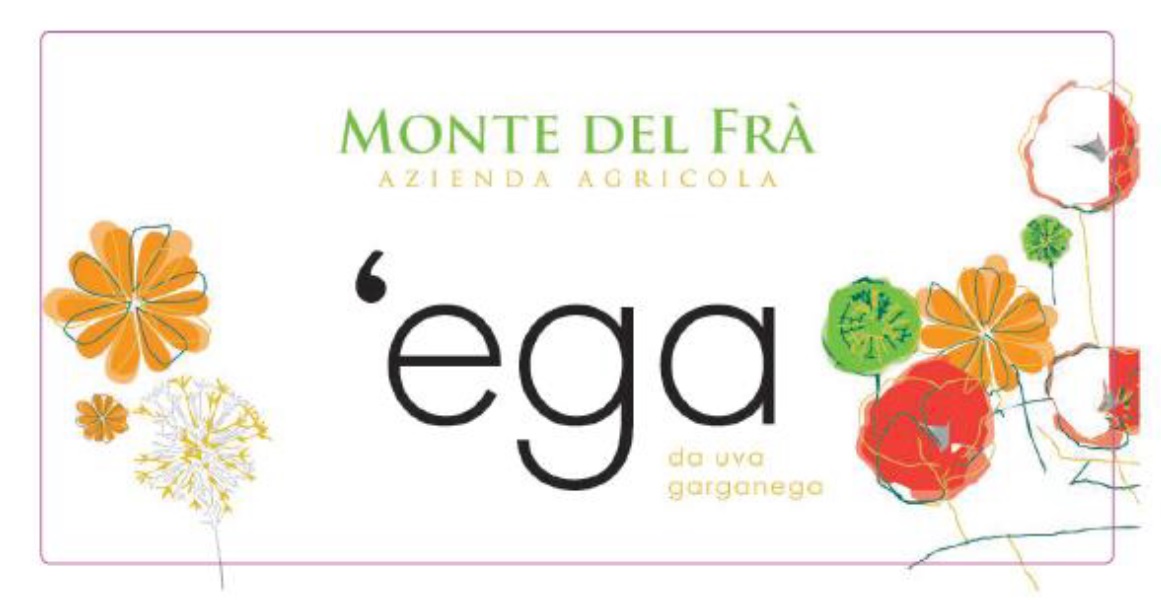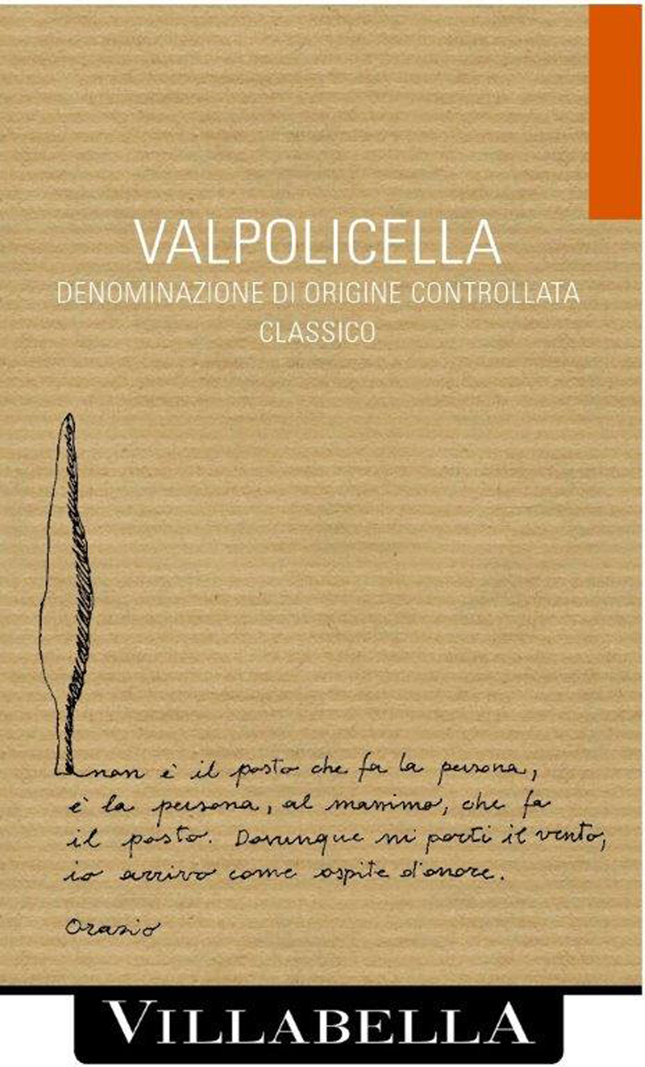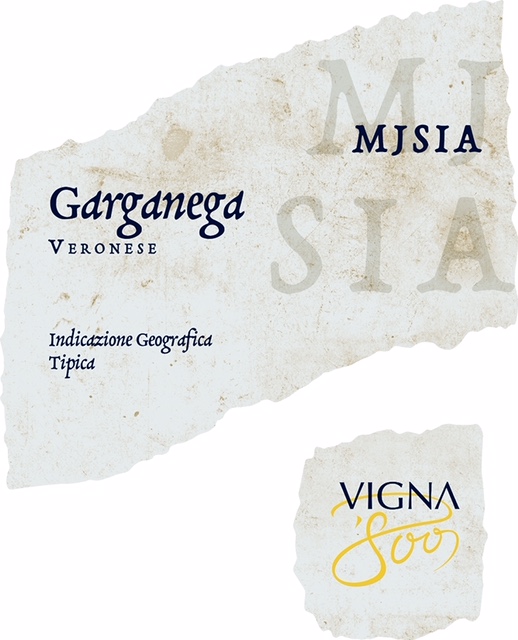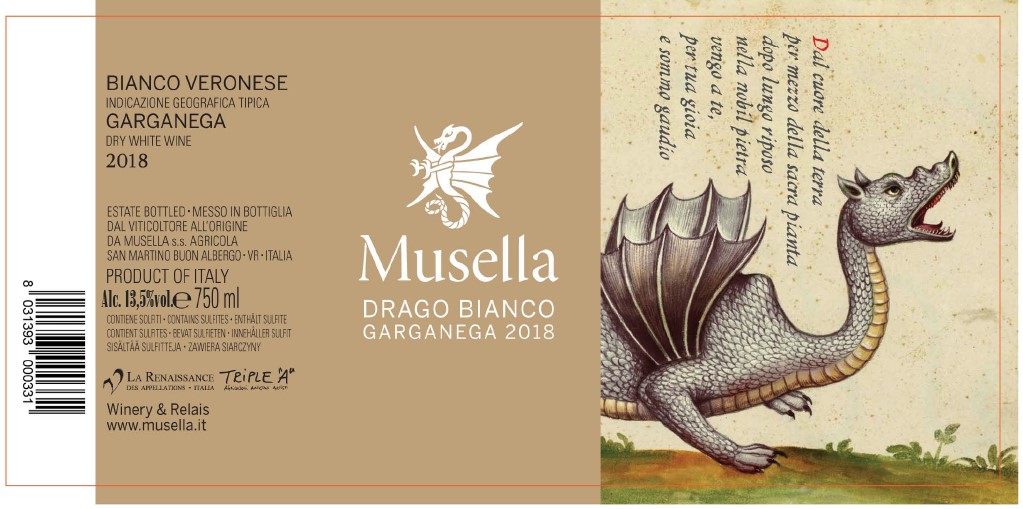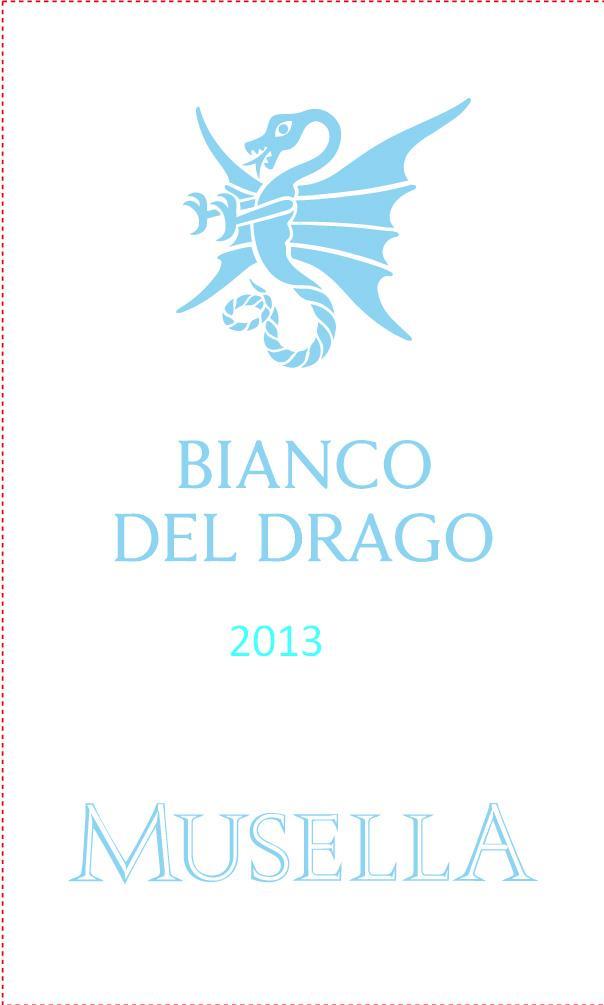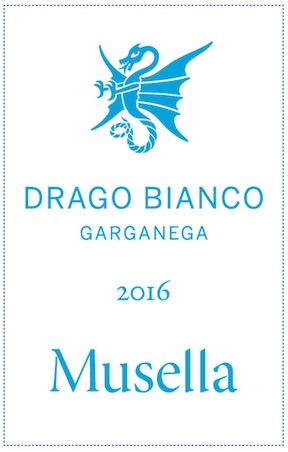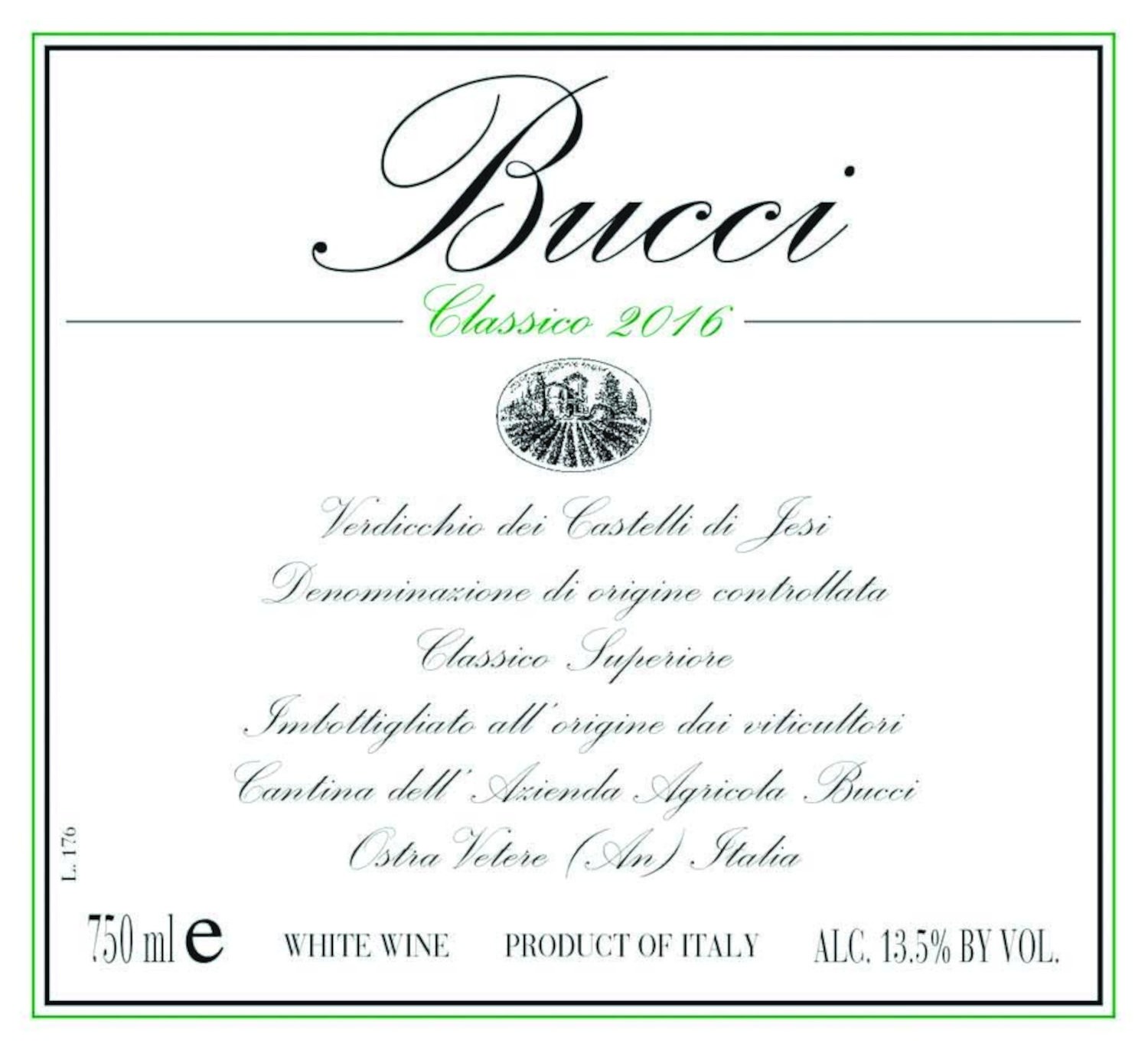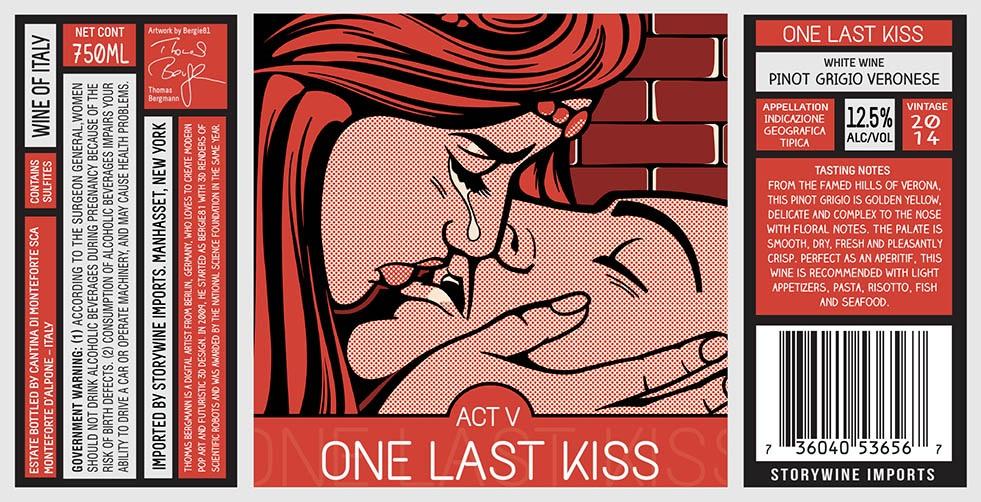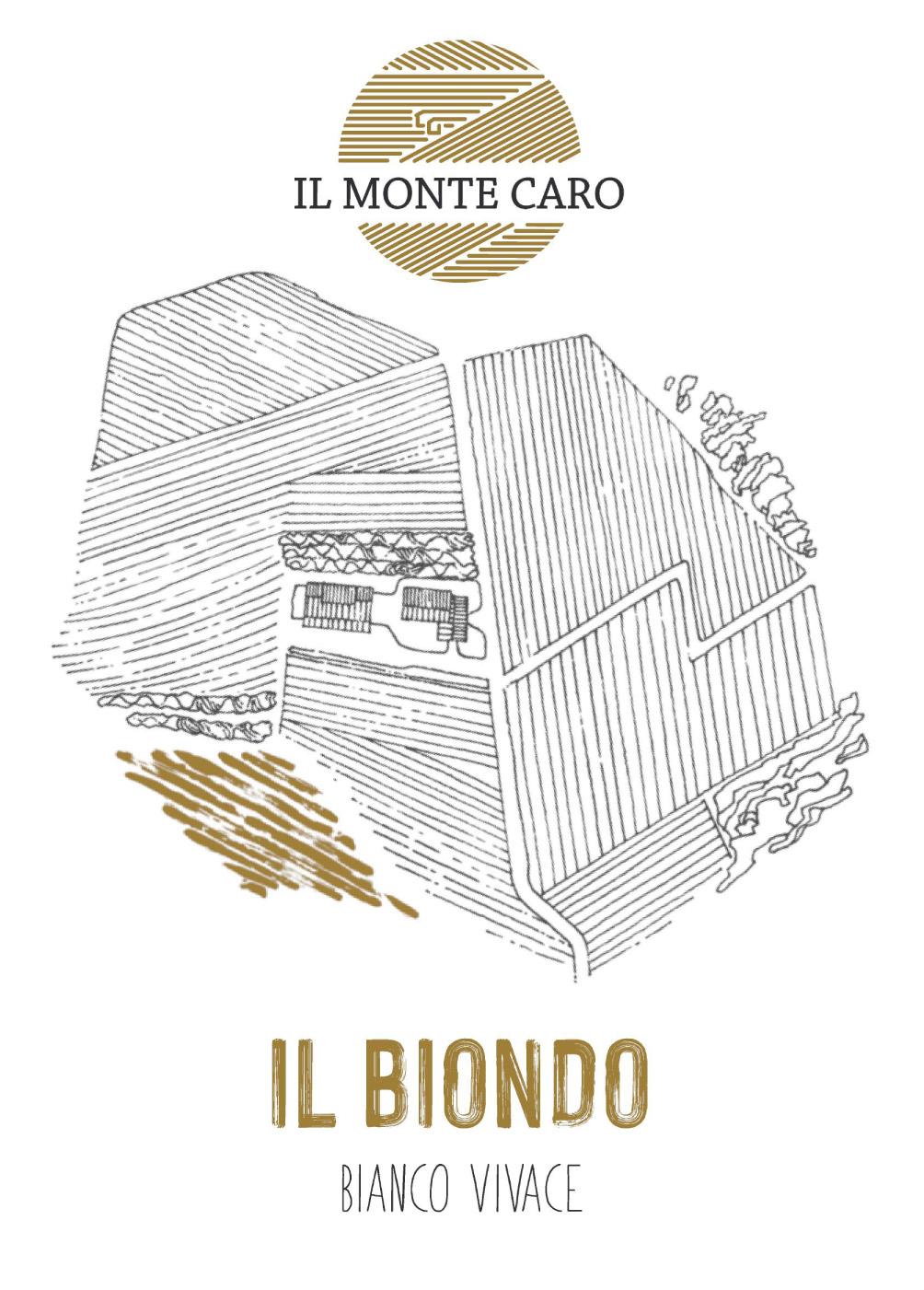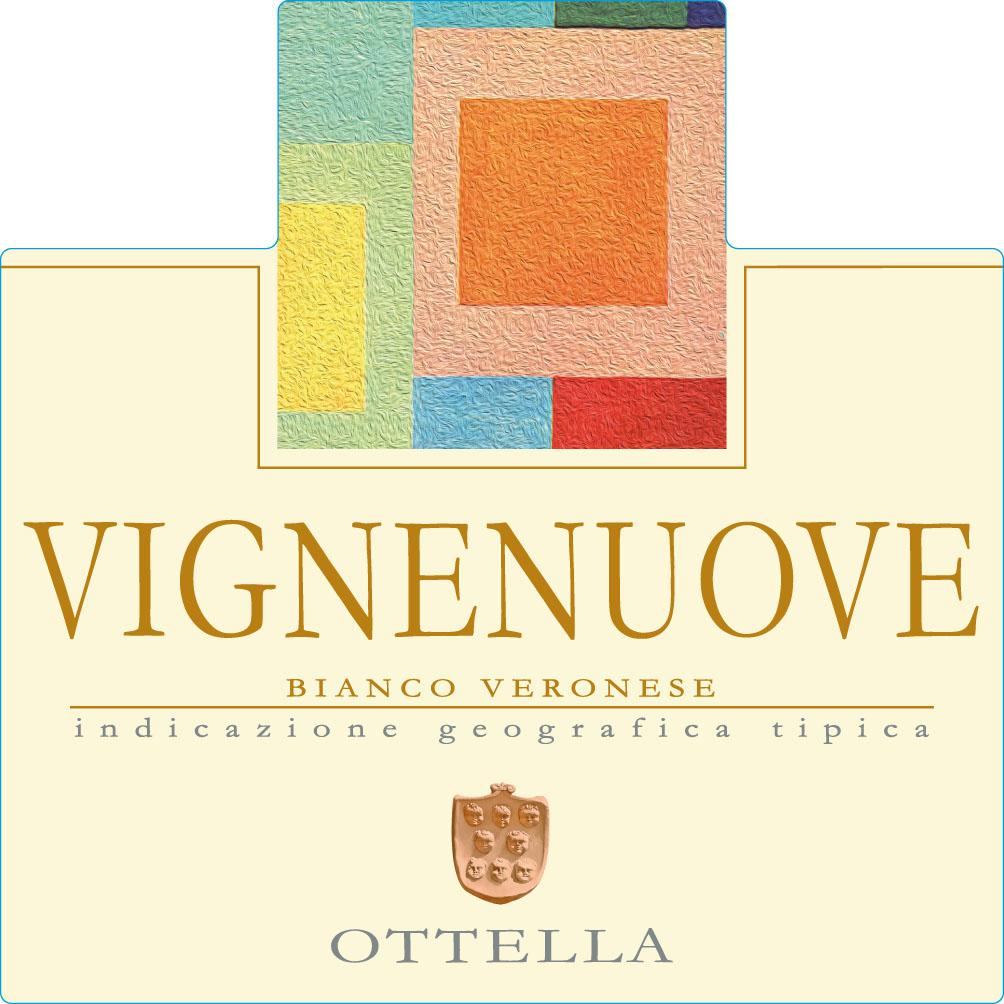Terroir of Valpolicella
Valpolicella is known for its hills and varied soils, which shape its distinct wines. In the Classico area, marly limestone like Biancone and Scaglia Rossa break down into lime-rich soils, while higher areas have dark basalt, creating clay-heavy soils. The valley floors are made of alluvial sands and clays, allowing for different wine styles—from early ripening in warm, rocky spots to fresher wines from cooler marl or basalt slopes.
The region has a warm climate with sunny summers and cool winters. Lake Garda helps balance temperatures, and the Monti Lessini mountains bring cool breezes, keeping grape acidity high. High-altitude vineyards benefit from temperature changes, perfect for the appassimento tradition. This mix of soils and climate adds to the depth and smoothness of Valpolicella wines.
Notable Wineries in Valpolicella
Valpolicella, in Italy's Veneto region, harmonizes tradition and innovation through its notable wineries. These estates weave a tapestry of history and modern winemaking prowess, creating wines that capture the essence of the region.
-
Bertani: Established in the 19th century, renowned for Amarone that matures gracefully, located in Valpantena.
-
Giuseppe Quintarelli: Revered for its long-aged wines, this Negrar winery embodies meticulous craftsmanship.
-
Masi Agricola: Innovators of appassimento techniques, offering unique flavors.
-
Tommasi: Based in San Pietro in Cariano, known for its distinguished wines.
These wineries, with their rich histories and distinctive approaches, invite visitors to explore Valpolicella's diverse wine culture through tastings, tours, and seasonal events.
Sustainable Winemaking in Valpolicella
Valpolicella is at the forefront of sustainable winemaking, aligning with Italy's SQNPI framework to balance tradition with environmental care. The region's vineyards prioritize careful agrochemical use, soil and water conservation, and biodiversity, often opting for organic or biodynamic methods. On steep hills, cover crops reduce erosion, while targeted drip irrigation conserves water during dry spells.
In the cellars, innovations like gravity-flow systems, solar power, and efficient lighting reduce the environmental footprint. The use of lighter bottles and native yeasts, along with aging in neutral casks or amphorae, minimizes additives. Advanced tools such as weather stations and soil sensors help address climate challenges, preserving both landscape and wine quality for future generations.
Wine Tourism in Valpolicella
Valpolicella offers a rich wine tourism experience near Verona, showcasing its diverse red wines against a backdrop of terraced vineyards and charming villages.
The "Strada del Vino Amarone e Recioto" connects highlights like San Pietro in Cariano, ideal for exploring wineries renowned for Amarone and Recioto. Visitors can enjoy cellar tours and tastings paired with local foods like Monte Veronese cheese.
The landscape invites outdoor activities such as hiking and cycling through vineyards, oak woods, and olive groves. Agriturismi provide farm-to-table dining and cozy stays, often with views of Amarone grape drying lofts.
Annual events, including open-cellar days and harvest celebrations, blend wine, food, and culture. This harmonious mix makes Valpolicella a must-visit for those interested in both the tradition and innovation of Italian winemaking.
